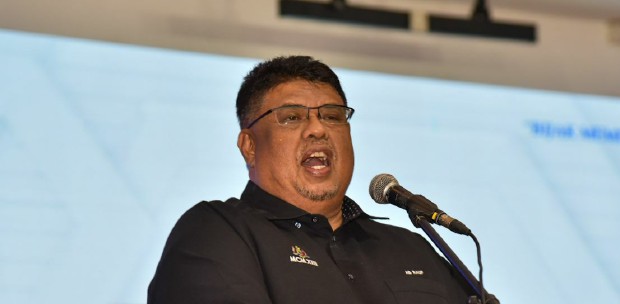According to the Melaka Waterfront Economic Zone (M-WEZ) website, the mega project involves 10,117ha along the 33km-long coastline and will be divided into five sections.
They include the Melaka Harbourfront, Smart Logistic Nucleus, Digital Satellite Township, Central Eco Business Park and the Trade Nucleus New Township.
There will be extensive reclamation work covering half of Melaka's coastline, affecting eight coastal constituencies.
From the Sungai Udang coast, M-WEZ will extend along Pantai Kundor to Klebang, Kesidang, Kota Laksamana, Bandar Hilir, Telok Mas to the northern part of Serkam.
As the project covers thousands of hectares of new land reclaimed from sea, fishermen have expressed concern about their livelihoods.
In fact, the RM43-billion Melaka Gateway project on Pulau Melaka, terminated in November last year, disrupted their fishing activities.
The noise and pollutants from the land reclamation work have driven marine life deeper into the sea.
The dredging for the expansion of the Tanjung Bruas port last year worsened the situation. Many fishermen lost nets and fish traps, as well as damaged equipment when their boats clashed with the sand-mining ships.
To sustain their livelihoods, some fishermen had to risk their lives by using small boats to go farther out to sea for their catch.
Sand-mining and dredging during reclamation would destroy the coastal ecosystem, such as coral reefs, seagrasses, mangroves, meadows and mudflats.
Lack of mangroves and mudflats eventually would cause seawater intrusion into groundwater and affect nearby agricultural land as the pH value of the soil is altered, making it unsuitable for plant growth, especially for species that are sensitive to salinity changes.
As land filling with dredging materials would increase suspended particles in the water column, this would eventually destroy the habitats and breeding grounds for fish, sea turtles, crustaceans, plants and other marine life.
And when replacing mangrove-lined coastlines with artificial structures, the water level in the original aquifer would rise, leaving coastal communities vulnerable to flooding.
Residents staying in low-lying, flood-prone areas, such as Kota Laksamana, Jalan Ong Kim Wee and the areas around Jonker Street, often experience mud-damaged electrical and home appliances. They had to absorb losses of up to thousands of ringgit.
The hardcore poor and B40 households who stay in flood-prone areas would become more vulnerable too.
Reclamation work conducted over a prolonged period may cause adverse effects on the public's health due to long-term exposure to dust and debris.
In addition, land reclamation projects have threatened the heritage of the Portuguese community.
To mitigate the losses associated with land reclamation work, the next state government should consider implementing these initiatives:
INTRODUCE reforestation around low-lying, flood-prone areas to regulate water flows, and to act as barriers against storm surges and protect against erosion and mudslides;
BARRAGES can be built in strategic locations to manage water-level control, especially as diversion and pumping or draining floodwater into the sea;
AN integrated water-pumping system should be developed that is linked to canals and rivers, located near the coast, to ensure excess water is drained into the catchment areas and sea;
REGULARLY clear solid pollutants that clog drains and rivers;
INCREASE the carrying capacity of rivers and drains, either by widening, deepening or both;
INSTALL simple, custom-designed surveillance Internet of Things (IoT) modules along the river — like a pollution-detection sensor, camera, micro-controller, transmitter and rechargeable lithium-ion battery — to prevent the river from clogging or silting;
BUILD high-capacity sewage treatment plants equipped with digital processes and nano-technology to restore polluted rivers to their original clean water-quality condition;
TRANSFORM abandoned and underused sites into community and economic assets, such as parks, affordable housings, catchment ponds (retention and detention); and,
INSTALL pedestrian walkways or cycling pathways — promoting not more than a 15-minute walking or cycling distance to most shops, parks, leisure facilities and residential areas.
In addition, the new state government should:
WORK with the private sector to identify tourism sites beyond Jonker Street and enable local products to be sold via digital applications and social media, thus increasing employability among the people of Melaka; and,
PROMOTE and emphasise the uniqueness, beauty and cultural heritage of Melaka via social influencers or social media platforms.
The writer is research analyst at EMIR Research, an independent think tank focused on strategic policy recommendations based on rigorous research
The views expressed in this article are the author's own and do not necessarily reflect those of the New Straits Times





